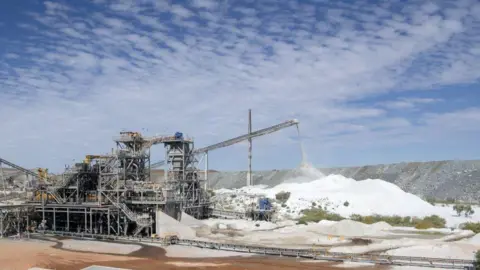The recent announcement by China to halt rare earth exports presents both challenges and opportunities for Australia as the global demand for these minerals continues to rise. Rare earth elements are crucial for a variety of advanced technologies, including electric vehicles (EVs), fighter jets, and numerous electronic devices. This strategic dimension of rare earth production has compelled Australian Prime Minister Anthony Albanese to devise a plan aimed at bolstering Australia’s position in this market ahead of the upcoming elections.
Australia’s pledge involves an investment of A$1.2 billion (approximately £580 million) into a strategic reserve for critical minerals. This investment comes in response to China’s imposition of export restrictions on seven key rare earth elements. While these controls apply universally, they are perceived as retaliatory measures against the tariff policies of former U.S. President Donald Trump. That context has motivated the Albanese government to prioritize the development of Australia’s own mineral resources to bolster security, both domestically and with international partners.
Despite Australia’s advantage in mineral reserves, its refining capabilities are significantly less advanced compared to China, which currently dominates the rare earth refining process. About 90% of the world’s refinement activities occur in China, which places Western nations in a vulnerable position regarding access to these essential resources. Consequently, analysts underscore that while Australia can increase its mineral output, the fundamental reliance on China for refining remains a considerable obstacle.
The strategic importance of rare earth elements cannot be overstated. Consisting of 17 distinct elements—among them samarium and terbium—these materials play vital roles in the production of innovative technologies that will shape future industries. With Australia being one of the leading producers of lithium and cobalt, minerals poised to revolutionize energy production, Albanese’s focus on these resources highlights a commitment to transforming the country’s resource sector.
China’s export restrictions are purportedly a response to protectionist trade policies introduced by the U.S. These restrictions have caused consternation regarding the long-term availability of rare earths, especially as Washington had depended heavily on China for these imports—comprising around 75% from 2019 to 2022, according to data from the U.S. Geological Survey. As tensions with Beijing have escalated, the realization that Western nations have neglected their long-term strategies for securing these critical minerals adds urgency to Australia’s proposed measures.
Moreover, industry experts point out that while Albanese’s initiative to create a reserve for critical minerals is positive, it will not fundamentally change the current market dynamics unless Australia significantly ramps up its refining capabilities. The existing infrastructure leads to overwhelming dependence on China for processing, despite Australia’s substantial mining output. Eventual plans to enhance local processing capabilities are underway, with companies like Arafura Rare Earths receiving funding to establish mines and refineries, yet experts predict that a complete transition may take years, potentially until after 2026.
In response to China’s maneuvers, the U.S. and its allies are likely to reassess their approaches towards securing rare earth supply chains. Analysts foresee that Australia’s proposed resource reserve could be utilized to alleviate some pressure on global prices, particularly if China’s export controls continue and affect market stability. However, it is clear that Australia cannot fully supplant China’s established monopolistic refinements, meaning diplomatic and trade collaborations among Western nations will remain critical.
The broader implications of this development resonate beyond just mineral trade; they encapsulate strategic geopolitical interests and considerations for national defense. As nations strive to lessen their reliance on China, the race towards diversification of supply chains and enhancement of domestic capabilities will define the next phase of international trade concerning critical minerals. Thus, Australia’s proactive stance may position itself favorably in an increasingly competitive landscape.



